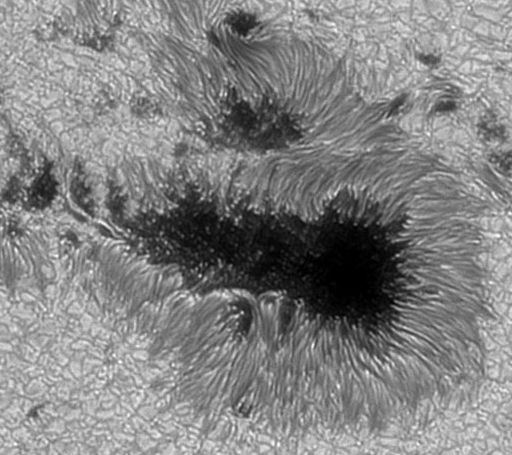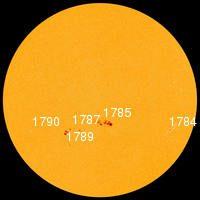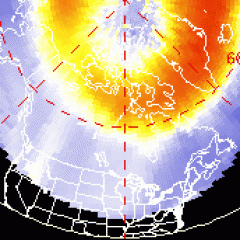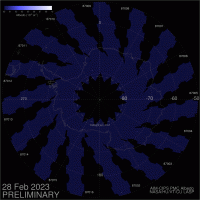BIG SUNSPOT FACES EARTH: Colossal sunspot AR1785 is now directly facing Earth. The active region has a 'beta-gamma-delta' magnetic field that harbors energy for X-class flares, yet so far the sunspot has been mostly quiet. Could it be the calm before the storm? NOAA forecasters estimate a 55% chance of M-flares and a 10% chance of X-flares on July 8th. Solar flare alerts: text, voice.
Sprawling more than 11 Earth-diameters from end to end, AR1785 is one of the biggest sunspots of the current solar cycle. In fact, it can barely fit on the screen. Click on the dark core below to see a complete hi-res picture taken by Christian Viladrich of Nattages, France:
To take the picture, Viladrich used a filtered 14-inch Celestron telescope. All those irregular blobs surrounding the primary dark core are boiling granules of plasma as small as the state of California or Texas. It's a very sharp picture. More images of the colossus may be found in the realtime gallery.

Solar wind
speed: 322.5 km/sec
density: 2.8 protons/cm3
explanation | more data
Updated: Today at 1417 UT
X-ray Solar Flares
6-hr max: B5 1240 UT Jul08
24-hr: C9 0122 UT Jul08
explanation | more data
Updated: Today at: 1400 UT
![]()
Daily Sun: 08 July 13
Earth-facing sunspot AR1785 has a beta-gamma-delta magnetic field that harbors energy for X-class solar flares. Credit: SDO/HMI
![]()
Sunspot number: 112
What is the sunspot number?
Updated 08 Jul 2013
Spotless Days
Current Stretch: 0 days
2013 total: 0 days (0%)
2012 total: 0 days (0%)
2011 total: 2 days (<1%)
2010 total: 51 days (14%)
2009 total: 260 days (71%)
Since 2004: 821 days
Typical Solar Min: 486 days
Update 08 Jul 2013
The Radio Sun
10.7 cm flux: 126 sfu
explanation | more data
Updated 08 Jul 2013
![]()
Current Auroral Oval:
Switch to: Europe, USA, New Zealand, Antarctica
Credit: NOAA/POES
![]()
Planetary K-index
Now: Kp= 1 quiet
24-hr max: Kp= 2 quiet
explanation | more data
Interplanetary Mag. Field
Btotal: 5.3 nT
Bz: 3.8 nT south
explanation | more data
Updated: Today at 1417 UT
![]()
Coronal Holes: 08 Jul 13
There are no large coronal holes on the Earthside of the sun. Credit: SDO/AIA.
![]()
Spaceweather.com is now posting daily satellite images of noctilucent clouds (NLCs), which hover over Earth's poles at the edge of space. The data come from NASA's AIM spacecraft. The north polar "daisy" pictured below is a composite of near-realtime images from AIM assembled by researchers at the University of Colorado's Laboratory for Atmospheric and Space Physics (LASP). |
![]() Noctilucent Clouds
Noctilucent Clouds
Switch view: Europe, USA, Asia, Polar
Updated at: 07-07-2013 11:55:02






